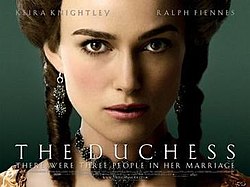Mise-En-Scene
Mise-En-Scene
The term can be known as ''putting in the scene'' , ''placing on the stage'' and or ''everything you see on the screen''.
It is the roots of theatre and a key component within film language. It displays the visual information in front of the camera and this information is essential to communicate.
In Mise-En-Scene there are 5 main elements;
- Settings and props
- Costume hair and makeup
- facial expressions and body language
- lighting and colour
- position of characters and objects in the frame
Setting
This important part of film making doesn't just mean the background of a scene but its overall tone as well.When finding areas to film it may be hard to find so some sets are built from scratch. If this is too hard to do location recce's find areas for the filming that already exist, however this may take a large amount of time. In some cases settings can be used to mislead audiences and build certain expectations to then take a different turn. This technique is very effective as it causes the audience to feel confused.
In film genres we relate several different types of settings and props with them for example;
Sci-fi - outerspace, futuristic, technology based, monitors/computing
Horror - House(old, beaten) , dark
Romance - warm location, roses, wine, home
Costume, hair and makeup
These components can instantly indicate to us a characters class, personality and status. They can also show us what time the film is set in (past, present, future). By using clothing to indicate the time it allows the audience to come to grips with it faster and more efficient than an on screen character having to explicitly say it. Makeup can be used in several different way, an example would be of the joker from 'The Dark knight'.

We can see that his makeup begins to fade as if he is at a point where he isn't at his full potential. This technique can show to us how a character is feeling without them needing to say which conveys stronger emotion.
Facial expressions and body language
This aspect is a key indicator of feeling. A character will show emotion through their face towards another character through facial expressions and body language letting the audience know how they feel towards one another. This could reflect a state in a relationship and how it changes over time.

usually you would find certain expressions linked with certain music such as a smiling person combined with up beat music ( example above ) , however you can combine certain music with the opposite expression to create a contrasting effect. We would usually assume happy music with certain emotions but by juxtaposing the two you are creating a sense of delusion in the audience.
Lighting and colour
Lighting can be used in several ways like highlighting important characters or objects , to creating a sinister silhouette.
In film making there is a three point lighting scheme where you have ;
Key light - main light
Fill light - fill shadows created by the key light
Back light - seperate the subject from the background
In this scheme we have Low key lighting and High key lighting.
In low key lighting we are only using the backlight to create a sharp contrast of light and darkness. Whereas, in high key lighting filler lights are used along with natural light to give a sense of realism. This produces brightly lit sets or a sunny day.
Position of characters and objects in the frame
Facial expressions and body language
This aspect is a key indicator of feeling. A character will show emotion through their face towards another character through facial expressions and body language letting the audience know how they feel towards one another. This could reflect a state in a relationship and how it changes over time.

usually you would find certain expressions linked with certain music such as a smiling person combined with up beat music ( example above ) , however you can combine certain music with the opposite expression to create a contrasting effect. We would usually assume happy music with certain emotions but by juxtaposing the two you are creating a sense of delusion in the audience.
Lighting and colour
Lighting can be used in several ways like highlighting important characters or objects , to creating a sinister silhouette.
In film making there is a three point lighting scheme where you have ;
Key light - main light
Fill light - fill shadows created by the key light
Back light - seperate the subject from the background
In this scheme we have Low key lighting and High key lighting.
In low key lighting we are only using the backlight to create a sharp contrast of light and darkness. Whereas, in high key lighting filler lights are used along with natural light to give a sense of realism. This produces brightly lit sets or a sunny day.
Position of characters and objects in the frame
When shooting the object being placed in certain areas gives them different amounts of importance. It can be used to draw attention to an important character so audience don't miss a significant section of the film. Along with this component the shot can have a background out of focus and the character in focus so only they are the major centre of attention.

To test our knowledge on Mise-En-Scene we viewed a section of 'The Duchess'.
From watching only a small section I was able to identify several aspects of this film such as the period of time, difference in class etc.

Comments
Post a Comment